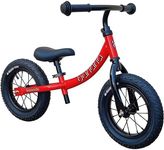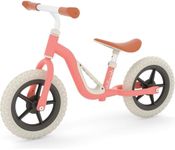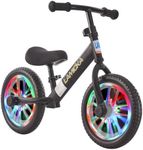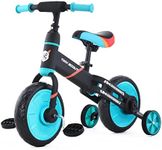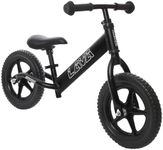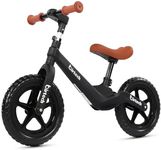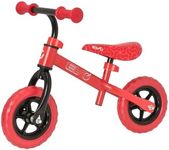Buying Guide for the Best Balance Bike For 3 Year Old
Choosing the right balance bike for your 3-year-old can be a fun and rewarding experience. Balance bikes are designed to help young children learn how to balance and steer before transitioning to a pedal bike. When selecting a balance bike, consider factors such as size, weight, and adjustability to ensure it fits your child's needs and promotes a positive learning experience. It's important to focus on the bike's features that will make it comfortable and easy for your child to use, encouraging them to develop their balance and coordination skills effectively.SizeThe size of the balance bike is crucial because it needs to be appropriate for your child's height and leg length. A bike that is too big or too small can hinder their ability to balance and control the bike. To navigate the size, look for bikes with adjustable seat heights, which allow the bike to grow with your child. Typically, the seat height should be set so that your child can sit comfortably with their feet flat on the ground. For a 3-year-old, a seat height range of 12 to 16 inches is often suitable, but always measure your child's inseam to ensure a proper fit.
WeightThe weight of the balance bike is important because it affects how easily your child can maneuver and control the bike. A lighter bike is generally easier for young children to handle, especially when they are learning to balance. Balance bikes typically range from 4 to 10 pounds. For a 3-year-old, a bike on the lighter side, around 5 to 7 pounds, is usually ideal as it allows them to lift and steer the bike with ease, boosting their confidence and encouraging them to ride more often.
MaterialBalance bikes are commonly made from materials like wood, metal, or plastic, each offering different benefits. Wooden bikes are eco-friendly and have a classic look, but they may not be as durable as metal bikes. Metal bikes, often made from aluminum or steel, are sturdy and long-lasting, making them a popular choice. Plastic bikes are lightweight and resistant to weather conditions, but may not offer the same durability as metal. Consider your child's usage and the environment in which they'll be riding to choose the material that best suits your needs.
TiresThe type of tires on a balance bike can affect the ride quality and the terrain it can handle. Balance bikes typically come with either air-filled tires or solid foam tires. Air-filled tires provide better traction and a smoother ride, especially on uneven surfaces, but require maintenance to keep them inflated. Foam tires are maintenance-free and work well on smooth surfaces, but may not offer the same level of comfort on rough terrain. If your child will be riding mostly on paved paths or indoors, foam tires are sufficient. For outdoor adventures on varied terrain, air-filled tires are a better choice.
AdjustabilityAdjustability is a key feature in balance bikes, allowing the bike to grow with your child. Look for bikes with adjustable seat and handlebar heights to ensure a comfortable fit as your child grows. This feature is important because it extends the usability of the bike, making it a worthwhile investment. For a 3-year-old, having a bike with a wide range of adjustability means they can use it for several years, adapting to their changing size and improving their riding skills over time.


